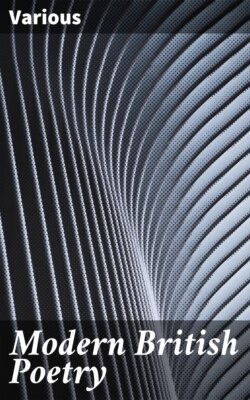Читать книгу Modern British Poetry - Various - Страница 11
На сайте Литреса книга снята с продажи.
"the georgians" and the younger men
ОглавлениеTable of Contents
There is no sharp statistical line of demarcation between Masefield and the younger men. Although several of them owe much to him, most of the younger poets speak in accents of their own. W. W. Gibson had already reinforced the "return to actuality" by turning from his first preoccupation with shining knights, faultless queens, ladies in distress and all the paraphernalia of hackneyed mediæval romances, to write about ferrymen, berry-pickers, stone-cutters, farmers, printers, circus-men, carpenters—dramatizing (though sometimes theatricalizing) the primitive emotions of uncultured and ordinary people in Livelihood, Daily Bread and Fires. This intensity had been asking new questions. It found its answers in the war; repressed emotionalism discovered a new outlet. One hears its echoes in the younger poets like Siegfried Sassoon, with his poignant and unsparing poems of conflict; in Robert Graves, who reflects it in a lighter and more fantastic vein; in James Stephens, whose wild ingenuities are redolent of the soil. And it finds its corresponding opposite in the limpid and unperturbed loveliness of Ralph Hodgson; in the ghostly magic and the nursery-rhyme whimsicality of Walter de la Mare; in the quiet and delicate lyrics of W. H. Davies. Among the others, the brilliant G. K. Chesterton, the facile Alfred Noyes, the romantic Rupert Brooke (who owes less to Masefield and his immediate predecessors than he does to the passionately intellectual Donne), the introspective D. H. Lawrence and the versatile J. C. Squire, are perhaps best known to American readers.
All of the poets mentioned in the foregoing paragraph (with the exception of Noyes) have formed themselves in a loose group called "The Georgians," and an anthology of their best work has appeared every two years since 1913. Masefield, Lascelles Abercrombie and John Drinkwater are also listed among the Georgian poets. When their first collection appeared in March, 1913, Henry Newbolt, a critic as well as poet, wrote: "These younger poets have no temptation to be false. They are not for making something 'pretty,' something up to the standard of professional patterns. … They write as grown men walk, each with his own unconscious stride and gesture. … In short, they express themselves and seem to steer without an effort between the dangers of innovation and reminiscence." The secret of this success, and for that matter, the success of the greater portion of English poetry, is not an exclusive discovery of the Georgian poets. It is their inheritance, derived from those predecessors who, "from Wordsworth and Coleridge onward, have worked for the assimilation of verse to the manner and accent of natural speech." In its adaptability no less than in its vigor, modern English poetry is true to its period—and its past.
This collection is obviously a companion volume to Modern American Poetry, which, in its restricted compass, attempted to act as an introduction to recent native verse. Modern British Poetry covers the same period (from about 1870 to 1920), follows the same chronological scheme, but it is more amplified and goes into far greater detail than its predecessor.
The two volumes, considered together, furnish interesting contrasts; they reveal certain similarities and certain strange differences. Broadly speaking, modern American verse is sharp, vigorously experimental; full of youth and its occasional—and natural—crudities. English verse is smoother, more matured and, molded by centuries of literature, richer in associations and surer in artistry. Where the American output is often rude, extremely varied and uncoördinated (being the expression of partly indigenous, partly naturalized and largely unassimilated ideas, emotions, and races), the English product is formulated, precise and, in spite of its fluctuations, true to its past. It goes back to traditions as old as Chaucer (witness the narratives of Masefield and Gibson) or tendencies as classic as Drayton, Herrick and Blake—as in the frank lyrics of A. E. Housman, the artless lyricism of Ralph Hodgson, the naïf wonder of W. H. Davies. And if English poetry may be compared to a broad and luxuriating river (while American poetry might be described as a sudden rush of unconnected mountain torrents, valley streams and city sluices), it will be inspiring to observe how its course has been temporarily deflected in the last forty years; how it has swung away from one tendency toward another; and how, for all its bends and twists, it has lost neither its strength nor its nobility.
L. U.
New York City.
January, 1920.
